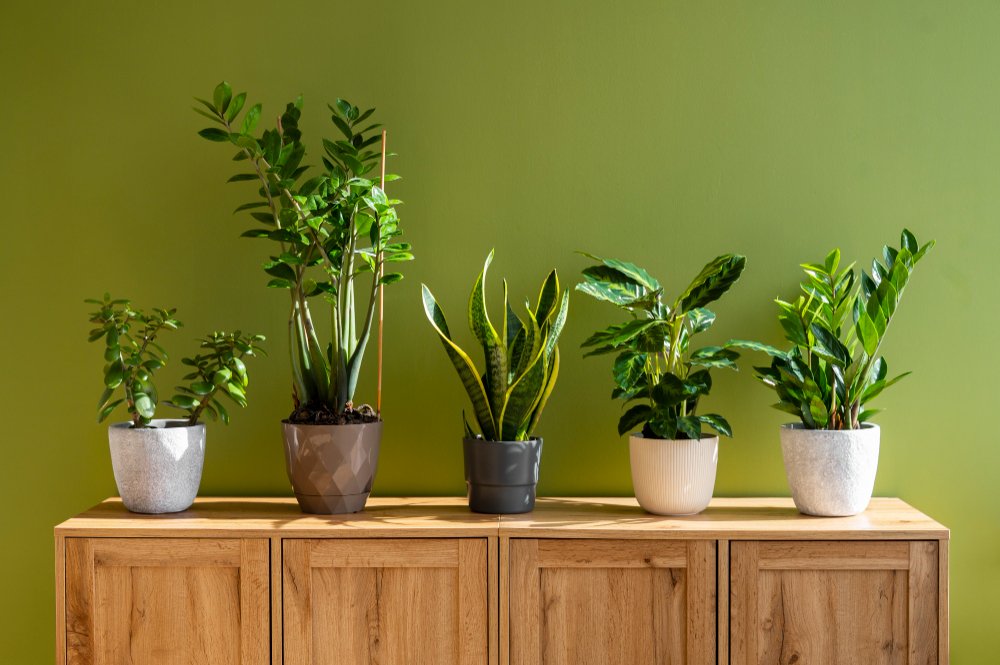Growing herbs indoors has become increasingly popular among home cooks, gardening enthusiasts, and anyone looking to add fresh flavors to their meals. Indoor herbs not only provide convenient access to fresh ingredients but also enhance the aesthetic appeal of your kitchen or living space. For beginners, easy indoor herbs are a perfect way to start gardening without feeling overwhelmed by complex care routines.
In this article, we’ll explore the top five herbs that thrive indoors, provide detailed care instructions, and share practical tips for maximizing their growth and flavor.
Why Grow Herbs Indoors?
Growing herbs indoors offers multiple benefits:
- Freshness: Harvest your herbs whenever needed for cooking, teas, or garnishes.
- Convenience: No need to run to the store for fresh herbs.
- Aesthetics: Indoor herbs add greenery and life to your home.
- Cost savings: Reduce the need for store-bought herbs.
- Therapeutic benefits: Gardening indoors can reduce stress and boost mood.
Indoor herb gardening is especially practical for those with limited outdoor space, apartment dwellers, or anyone who wants to bring nature indoors.
What Makes an Herb Easy to Grow Indoors?
Some herbs are more forgiving and adaptable to indoor conditions. When selecting easy indoor herbs, look for plants that:
- Tolerate indirect sunlight or partial shade
- Require minimal watering
- Adapt well to container life
- Grow quickly and produce frequent harvests
These traits make herbs beginner-friendly and reduce the chances of failure, even for first-time indoor gardeners.
1. Basil
Basil is a fragrant herb commonly used in Italian, Thai, and Mediterranean cuisine. Its fresh leaves add flavor to pasta, salads, and sauces.
Care Tips:
- Light: Needs 6–8 hours of bright, indirect sunlight daily.
- Water: Keep soil consistently moist but not soggy. Water when the top inch of soil feels dry.
- Temperature: Prefers warm indoor temperatures between 65–75°F (18–24°C).
- Pruning: Regularly pinch off leaves to encourage bushier growth.
Why it’s easy to grow: Basil grows quickly and adapts well to pots on sunny windowsills or under indoor grow lights.
2. Mint
Mint is a hardy, aromatic herb ideal for teas, desserts, and savory dishes. It is known for its vigorous growth and pleasant fragrance.
Care Tips:
- Light: Prefers 4–6 hours of indirect sunlight daily.
- Water: Keep soil moist; mint thrives in slightly damp conditions.
- Container: Use a pot with drainage holes to prevent root rot.
- Pruning: Regularly trim leaves to prevent the plant from becoming leggy and to encourage new growth.
Extra tip: Mint spreads quickly, so it’s best to grow it in its own pot to avoid overtaking other plants.
3. Parsley
Parsley is a versatile herb used in soups, salads, and garnishes. Its flat-leaf and curly varieties are both suitable for indoor cultivation.
Care Tips:
- Light: Requires 5–6 hours of sunlight per day; a south-facing window is ideal.
- Water: Keep soil consistently moist, especially during germination.
- Temperature: Prefers cooler indoor temperatures around 60–70°F (15–21°C).
- Maintenance: Trim leaves regularly to encourage bushier growth.
Why it’s beginner-friendly: Parsley is forgiving and produces fresh leaves continuously when cared for properly.
4. Chives
Chives are mild, onion-flavored herbs that work well in salads, soups, eggs, and baked dishes. They are compact and perfect for indoor containers.
Care Tips:
- Light: Needs 6–8 hours of sunlight daily or supplement with grow lights.
- Water: Water when the top inch of soil is dry; avoid waterlogging.
- Container: Use a pot at least 6 inches deep for optimal growth.
- Maintenance: Trim leaves regularly to maintain a neat shape and encourage regrowth.
Extra benefit: Chives are slow to bolt indoors and can produce edible leaves for months.
5. Rosemary
Rosemary is a fragrant, woody herb commonly used in Mediterranean dishes, roasted vegetables, and meats.
Care Tips:
- Light: Needs at least 6 hours of direct sunlight or a strong grow light.
- Water: Allow soil to dry slightly between waterings; overwatering can cause root rot.
- Temperature: Thrives in cooler indoor temperatures around 60–70°F (15–21°C).
- Maintenance: Prune regularly to maintain shape and encourage dense growth.
Why it’s easy to grow indoors: Rosemary is hardy, drought-tolerant, and adapts well to container life when given enough light.
Tips for Growing Herbs Indoors Successfully
Even beginner-friendly herbs benefit from some attention. Follow these tips to maximize growth and flavor:
- Choose the right pots: Ensure containers have drainage holes to prevent waterlogging.
- Use quality soil: A light, well-draining potting mix is ideal for indoor herbs.
- Provide adequate light: Place herbs near a sunny window or use LED grow lights if natural light is insufficient.
- Water properly: Avoid overwatering; most herbs prefer soil that dries slightly between watering.
- Prune regularly: Trimming encourages bushier growth and prevents herbs from becoming leggy.
- Fertilize lightly: Feed with a balanced, water-soluble fertilizer once a month during the growing season.
- Rotate plants: Turn pots occasionally to ensure even light exposure and balanced growth.
Benefits of Growing Easy Indoor Herbs
- Fresh ingredients at your fingertips: Enjoy homegrown flavor in cooking.
- Cost-effective: Save money by reducing store-bought herbs.
- Healthier meals: Use herbs to add natural flavor and nutrients to dishes.
- Stress relief: Gardening has calming and therapeutic effects.
- Eco-friendly: Indoor gardening reduces reliance on commercially grown herbs that require transport and packaging.
Conclusion
Growing easy indoor herbs is a rewarding and practical way to enhance your cooking, improve your home environment, and start your indoor gardening journey. Basil, mint, parsley, chives, and rosemary are all excellent choices for beginners due to their adaptability, low-maintenance needs, and flavorful yields.
By providing adequate light, proper watering, and regular pruning, even first-time gardeners can enjoy fresh, aromatic herbs year-round. Start with one or two herbs today, and gradually expand your indoor herb garden to create a vibrant, flavorful, and low-maintenance indoor oasis.
